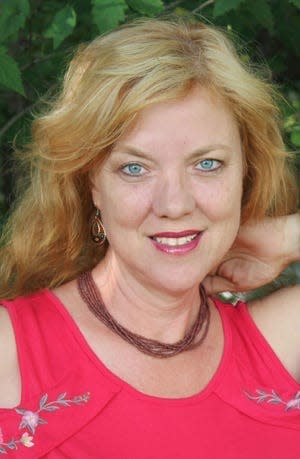The Story Never Ends: Welcome back feathered friends
- Oops!Something went wrong.Please try again later.
Spring is a homecoming for the birds of the air!

Can you imagine that we made it through winter without too much of a significant incident in weather and arrived at the other side of the season? Thank God we are no longer shoveling snow and can see signs of spring, like returning birds!
Everything is fresh and new again in spring. It is the season of rebirth and awakening glory. It takes us from our sleepy, little sunlight lives to longer days, warmth and the arrival of our feathered friends who are returning to their summer homes in Somerset County. Welcome back!
Eastern Whippoorwill
The Whippoorwill is calling again. I don't think I have ever seen a Whippoorwill bird in my life but I have surely heard them calling in my field every year at this time. That's because they are more often heard than seen. They usually do that familiar Whip-Poor-Will at night. According to Wikipedia, that call for which they are named is a mating song and is usually heard at night and an Eastern Whippoorwill is rarely seen because of its camouflage.
And, this mysterious bird has ended up on the pages of famous authors like Stephen Vincent Benet, Elizabeth Barrett Browning, Robert Frost, William Faulkner, Washington Irving and James Thurber. Henry David Thoreau (still one of my favorites authors!) even wrote, "The note of the whip-poor-will borne over the fields is the voice with which the moon and moonlight woo me."
Country music singer Hank Williams even penned about the bird in his famous lyrics, "Hear the lonesome whip-poor-will. He sounds too blue to fly. The midnight train whining low. I'm so lonesome I could cry."
Yet, I don't consider Whippoorwill's cry to be sad, like Hank Williams did. I think it is so interesting and direct — so necessary to be heard. I always try to listen to see its direction. It's like he is really saying, "it's spring and I'm here and now you can rest from winter."
Barn Swallow
The first Barn Swallows started appearing a few weeks ago. Now, the Barn swallow has and will always be my favorite bird. To me and my family, they are like a long lost relative returning after a long journey — coming home from abroad to stay in our barns and fields. We are always thankful that the Lord has allowed us to live yet another year to see the Barn swallows.
According to Wikipedia, the Barn swallows fly from North American breeding grounds to Central and South American wintering areas. They are beautiful with cobalt blue on top and peachy color underneath and their forked tail allows them that playful, soaring type of flying. My children and I have even named a few in year's past, even though we could never really tell them apart.
And, their nest building ability is like none other — taking a beak-full of mud at a time and constructing a soil palace for their offspring. How is it possible that they know how to do this? And, no doubt their mud hut is more solid than their colleagues who use a straw contraption.
American Robin
And, then there's the Robin. Okay, so maybe they don't have a good voice like the Whippoorwill, or an attractive appearance like the Barn Swallow but you have to give the Robin credit. They are tenacious! Right? And, they travel in numbers.
So, a Robin has built its nest underneath my front porch and I must say I am honored.
Many online versions of this old legend basically say that such an endeavor for any bird to make its home on a house means new life. It can mean prosperity, health, happiness, friendship and good luck. Let's go with all of the above. But, the way I see it is that the Mother Robin found safety and security here and is probably a returning chick from last year whose parents raised her here. This is her home too. Welcome back, Mother Robin, and all the other beautiful, feathered creatures who have returned home!
This article originally appeared on The Daily American: Sandra Lepley column about birds returning to Somerset County
